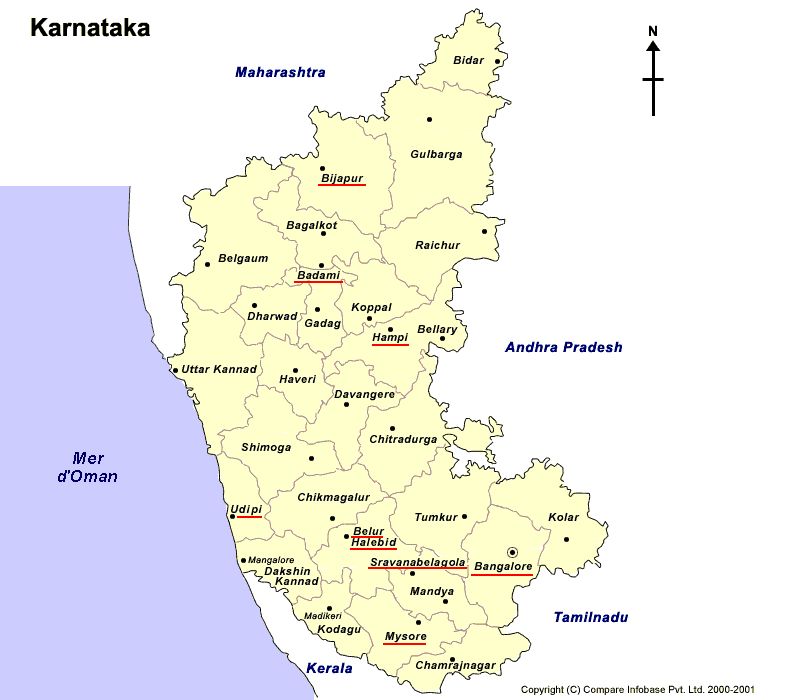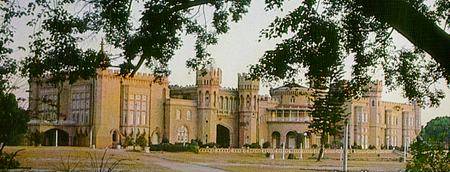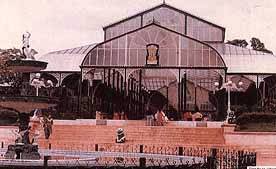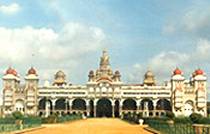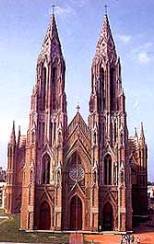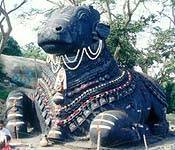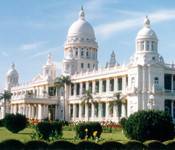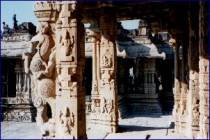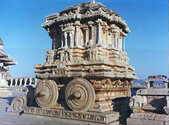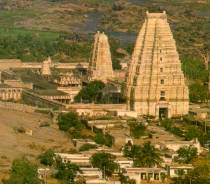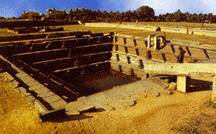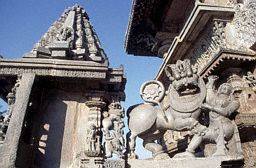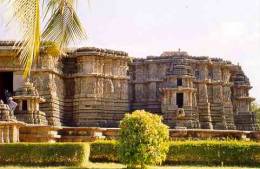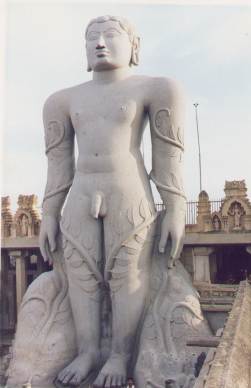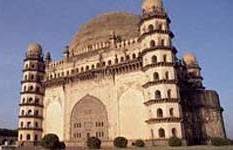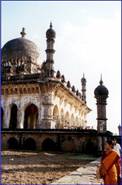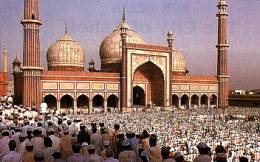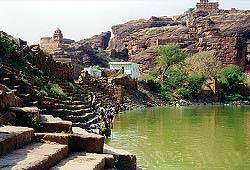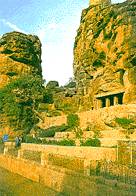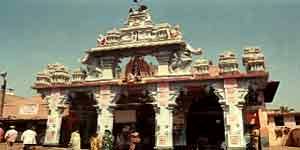The state of South India, Karnataka covers 191,773 km2 and has a population of 49 million. Its capital is Bangalore and the official language is the kannada.
History
The history of Karnataka is very rich because of the succession of dynasties that governed it. Among the most important, from the historical and cultural point of view, we can mention the Ganga (4th century), the Chalukya (6th to 10th century), the Hoysala (11th to 14th century) in the arts, the Vijayanagara (in the 15th and 16th centuries) who drove out the Muslim invaders. In 1565 the Muslims of the Deccan regained control of the region and divided it into small kingdoms.
It was Hyder Ali and his son Tipu Sultan who governed what was then called the state of Mysore when the French and the British struggled to establish their domination. In 1799, Tipu Sultan, who supported the French, was overthrown by the English who annexed his kingdom. They restored the Wodeyar Hindu dynasty which ruled until state independence in 1956. The state was renamed Karnataka in 1972.
Map of the province of Karnataka
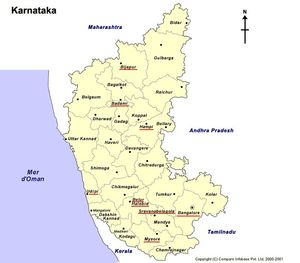
Map Karnataka
Bangalore
With its 5.2 million inhabitants, Bangalore is the capital of Karnataka. The city was founded in the sixteenth century and was quickly fortified, notably by Hyder Ali and Tipu Sultan. The modern city experienced an important economic boom with the establishment in the 60s of high-tech companies. Today it is one of the major centers of scientific research in India, especially in the field of information technology.
Because of its economic importance, Bangalore is well served by means of transport and has an international airport. The city, however, suffers from the great evils of the Indian agglomerations (pollution, bottling, overgrowth, etc.)
The fort and the palace
The fort was built by Kempe Gowda in the 16th century and then expanded by Hyder Ali and his son Tipu Sultan in the 18th century. The palace was built in 1887. The architects were inspired by the Tudor-style English castles. Inside you can see many paintings and sculptures.
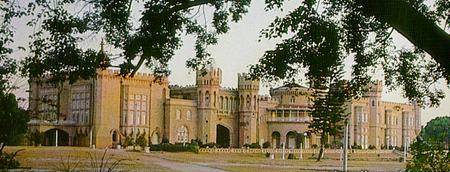
The palace of Bangalore
Lalbagh Botanical Gardens
Located south of the city, this 96-hectare garden was designed by Hyder Ali. Dozens of species of trees were planted there by Tipu Sultan. Today, there are over 1000 species of tropical flowers and centenarian trees. The main attraction of the garden remains the gigantic greenhouse built on the model of the Crystal Palace in London.
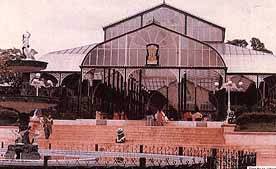
Lalbagh Botanical Gardens
Government museum
Built in 1866, this museum is one of the oldest in India. It houses important collections of sculptures, pottery, weapons. Not far from the museum is the Visveshwaraya Science and Technology Museum.
The Vidhana Soudha
This neo-Dravidian building was erected in 1954 to house the parliament and the government of Karnataka. The Cabinet Room has an imposing sandalwood door.
The temple of the bull
This temple, built in the Dravidian style by Kempe Gowda, houses an enormous monolithic statue of Nandi (4.5 m high and 6 m long). Access to the temple is allowed to non-Hindus. At the end of the year, a celebration takes place to celebrate the end of the peanut harvest.
The Cubbon park
Built in the center of the city in 1864, this large park (120 hectares) offers a pleasant setting to escape the noise of the city. It houses the Supreme Court building and the municipal library.
The temple of Gangadharechwara
Dedicated to the Vedic god of fire, Agni, this temple was built under Kempe Gowda. It has four large monolithic pillars. Every year, in mid-January, the rays of the setting sun pass between the horns of a statue of Nandi and illuminates a lingam of Shiva.
Mysore
Mysore holds an important historical place since it was the seat of many princely dynasties. That of the Wodeyars reigned there until independence. Many monuments still bear witness to these successive reigns. The city, located at 770 m altitude, is renowned for its pleasant climate. It is also known to tourists because of its silks and sandalwood. Mysore is also one of the great centers of homemade incense in India.
The palace of Mysore
The present palace was rebuilt in 1912 on the ruins of the old palace destroyed by a fire in 1897. The architecture is a mixture of Dravidian, Indo-Muslim and Oriental style. The building has many rooms with marble floors, mahogany ceilings, wooden or silver doors. The most spectacular is the Dunbar Hall with its carved columns. This is where the golden throne inlaid with diamonds of the Wodeyar is displayed during the feast of Dussehra.
Visitors can admire many portraits of the maharajas that followed one another in Mysore and superb paintings of the surrounding landscapes. The palace is beautifully lit on Sunday evenings and during the holidays.
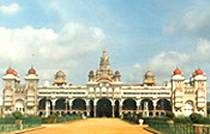
The palace of Mysore
The Church of St. Philomena
This neo-Gothic cathedral is one of the largest churches in India. It was built in the 1930s by French architects who took inspiration from St. Patrick's Cathedral in New York and the cathedral in Cologne. A statue and relics of St. Philomena are housed in a crypt inside the church.
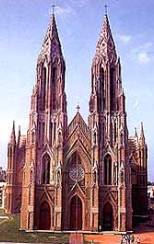
The Church of St. Philomena
The hill of Chamundi
Dominating the city at an altitude of 1062 meters, Chamundi Hill is home to the temple (12th century) of Sri Chamundeswari, protective goddess of the Wodeyar dynasty. The seven-story gopuram of this temple is 40 m high and is covered with statues representing the goddess in all attitudes. In front of the temple is a gigantic painted statue of Mahishasura, demon defeated by Chamundeswari. From the city a bus will allow you to reach the top of the hill but the most courageous will take the stairs of 1000 steps that the pilgrims must climb.
Halfway along this staircase is a monumental statue of the Nandi bull, dating from the 17th century, and carved in a 5-meter high monolith.
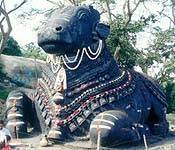
The hill of Chamundi
The palace Lalitha Mahal
This palace was built by the maharaja of Mysore in 1921 to receive its distinguished guests. The domes were built on the model of the Cathedral of St. Paul in London. The palace has been converted into a luxury hotel with 54 rooms.
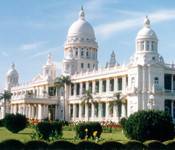
The palace Lalitha Mahal
The island of Srirangapatnam
Located on the Cauvery River, 14 km from Mysore, this island originally housed the Sriranganathaswamy temple built in the 10th century. The sovereigns made it a fortified place which reached its apogee under Hyder Ali and Tipu Sultan. The latter established there their capital and it was there that Tipu Sultan died in 1799 fighting the English. Today we can still see parts of the ramparts, some gates and the keep.
The gardens of Bindavan
Situated near the Krishna Raja Sagar dam, not far from the island of Srirangapatnam, these gardens are popular with the people of Mysore. There you can picnic, walk and admire the musical fountain. The fountains of the garden are illuminated in the early evening.
Hampi
The city of Hampi (or Vijayanagar) was founded by two Telugu princes, Hakka and Bukka, in 1336. It became the capital of the Vijayanagara empire. It reached its peak during the reign of Krishnadevaraya (1509-1529). At the time Hampi was known for its wealth and power. The Vijayanagara empire collapsed in 1565 under the blows of the sultans of Deccan. Muslims completely destroyed the city in less than six months.
The ruins are still excavated. Departures from visits are usually from the village of Hampi Bazaar. Do not be surprised by the monkeys that populate the ruins by hundreds.
The temple of Vithala
Without doubt the most beautiful monuments of the ruins of Hampi. It is also listed as a World Heritage Site. The main pavilion is surrounded by 56 sculpted columns that emit a note when struck. In the courtyard is a small temple in the form of a chariot in which is placed a representation of Garuda, the sacred mount of Vishnu. It is said that this temple was so finely built that the wheels can turn.
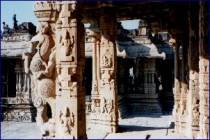
The temple of Vithala
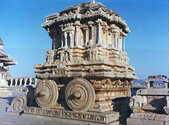
A chariot of the temple of Vithala
The temple of Virupaksha
Built in the 15th century and dedicated to Shiva, this temple is representative of the architecture of the temples of South India. It has a gopuram high of 52 meters and a corridor with carved columns of animals. Not far away is a monolithic statue of Narasimha (fourth avatar of Vishnu) 6.7 m high high and sculpted in the sixteenth century.
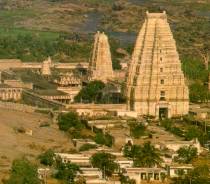
The temple of Virupaksha
The ruins
During your walk in the ruins of Hampi you can admire various structures, often surrounded by walls made using the gigantic round stones of the site:
- The stables of the elephants: a long building with tall vaulted rooms where the royal elephants were housed.
- The Queen's Bath (photo): swimming pool of 15 m long and 2 m deep.
- The Lotus Mahal: Small pavilion in Hindu-Muslim style.
- The underground temple.
- etc.
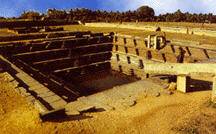
Queen's Baths in Hampi
Belur and Halebid
Belur and Halebid were the two great cities of Hoysala sovereigns. Halebid became the capital of the kingdom in 1060. This dynasty reigned between the eleventh and fourteenth centuries. Distances of 17 km, both cities have preserved the great temples built at that time. They remain the witnesses of the exuberant artistic wealth of the time. The Hoysala converted to Jainism, which explains the presence of Jain deities alongside the Hindu divinities.
The temple of Channekeshava (at Belur)
Its construction was initiated in 1116 to celebrate the victory of the Hoysala on the Chola, it did not end until 103 later. The facade of the temple is covered with sculptures of animals, divinities, Hindu sages, friezes representing scenes from the sacred texts. None is the same as another. Unlike other hoysala temples, the interior is more richly decorated than the exterior, especially on lintels and pillars. The temple is endowed with a gopuram built in the fourteenth century and a basin.
Entrance is permitted to non-Hindus except in the Holy of Holies.
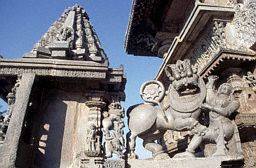
The temple of Channekeshava
The temple of Hoysaleswara (at Halebid)
Construction began at the same time as Channekeshava but it was never completed despite 80 years of work. It is, however, the most remarkable example of Hoysala art. The exterior and interior walls are entirely covered with sculptures and friezes of all kinds. They depict scenes from sacred texts but also from life in the hoysala era. To be accompanied by a guide will allow you to distinguish the most beautiful sculptures.
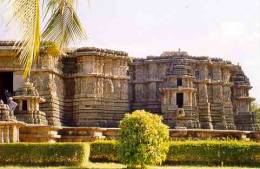
The temple of Hoysaleswara
Sravanabelagola
This small town of 4000 inhabitants is the most important pilgrimage city of Jainism. The history of Sravanabelagola dates back to 3000 BC when King Maurya Chandragupta came to retreat with his guru Jain Bhadrabahu. Since then the Jain religion has prospered there. Even today most of the establishments are run by the Jain organizations.
The statue of Gomateshwara
This monolithic statue, one of the largest in the world, is 17 meters high. Its construction began in 978 under the impulse of King Chavundaraya and ended in 993. It represents Gomateshwara (also called Bahubali), son of the legendary Rishabha, founder of Jainism. It was erected on top of a hill and is visible 20 km away. To see her, one must climb the 614 steps of a staircase dug in the granite.
Every 12 years there is a very important ceremony, the Maha Masthaka Abhisheka: thousands of faithful come to witness the bath of the statue. After having erected a wooden platform, the priests sprinkle his head with various offerings (milk, clarified butter, saffron water, fruits, etc.) which the faithful gather at the feet of the statue. The next ceremony will take place in 2017.
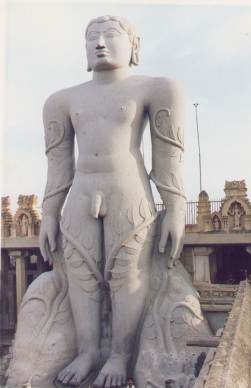
The statue of Gomateshwara
The temples
The town has some pretty temples (basti) and monasteries (math). Among these are the Bhandari Basti and its 24 representations of the Tirthankaras (12th century). Not far away is a monastery with beautiful mural paintings, bronze statues from the 10th century and palm-leaf manuscripts.
The Chandragupta Basti, built in the 12th century, has three rooms. Paintings of sculptured marbles show different episodes in the life of Chandragupta and his guru Bhadrabahu. The Chamundaraya Basti and its two levels, the bottom one dedicated to Neminatha and the top one dedicated to Parshvanatha.
Bijapur
The city of Bijapur was the capital of the Muslim dynasty of Adil Shah between 1489-1686. For this reason the city has many mosques, palaces and tombs. It is also known for the quality of its hand-woven saris.
The Golgumbaz
Built in 1659, this mausoleum houses the tomb of Mohammed Adil Shah. The unique and immense hall is overlooked by a dome 38 meters in diameter, making it the second largest in size after that of St. Peter's Basilica in Rome. Four octagonal-shaped minarets rise to the corners of the mausoleum. At the base of the dome is a gallery nicknamed "gallery of murmurs" due to the exceptional acoustics of the place. The echo of the least noise can be felt up to ten times.
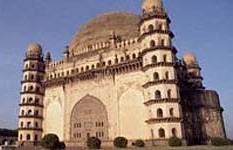
The Golgumbaz
The mausoleum of Ibrahim Roza
Ibrahim Roza is the mausoleum that Ibrahim Adil Shah II (1580-1626) had built for his wife. This building is distinguished by the beauty of its corridors, its walls, its windows. It would have inspired the Taj Mahal. Besides the tomb of Sultana Taj Sultana, the mausoleum houses those of Ibrahim Adil Shah, his children and his mother.
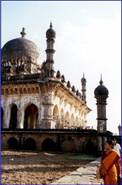
The mausoleum of Ibrahim Roza
The mosque Jama Masjid
Built in the 16th century and overlooking a beautiful dome, this mosque is always a place of worship. It contains a Quran whose suras have been copied into a golden letter. In order to delineate the place of each faithful, the prayer hall was gridded in 2250 squares. This mosque is one of the oldest and most beautiful in India.
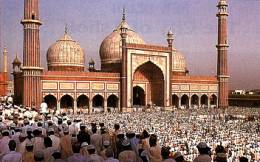
The mosque Jama Masjid
Malik-e-Maidan
Malik-e-Maidan (the monarch of the plains) is the largest canon of the Middle Ages still visible. Measuring 4 m long, 1.5 m in diameter and weighing 55 tons, this gun was reported from the Maharashtra as a war trophy for 400 oxen, 10 elephants and dozens men. It is said that anyone who touches the metal of the cannon by making a wish will see it realized.

Malik-e-Maidan
Badami
Built between two rocky hills, the town of Badami on the capital of Chalukya between 540 and 757. The temples built at the time inspired the Dravidian style.
The temples dug
The city is known for its temples dug into the rock. There are four plus a natural cave. Two of them are dedicated to Vishnu, another to Shiva and the last one is a Jain temple. In the first temple of Vishnu there is a statue of Vamana and Varaha, two of Vishnu's avatars.
In the temple of Shiva there is a representation of a Nataraja with 18 arms and its 81 poses. These caves overlook the large Agastyatirtha basin dug in the 5th century and on the edge of which are the two temples of Bhutanatha.
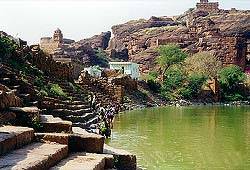
A temple of Badami
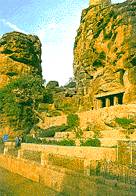
A temple of Badami
Udipi
Udipi (or Udupi) is one of the great pilgrimage centers of Vishnusmo. It is here that lived and taught the Hindu sage Madhavacharya (1239-1319). He founded the great temple of Krishna, which attracts thousands of believers every year.
The temple of Krishna
Founded by Madhavacharya, it is one of the most important place of worship dedicated to Krishna. The statue of Krishna visible in the temple is dressed in all kinds of attire by the faithful. For the big occasions it is adorned with a crown of diamonds. The oil lamp that burns beside the deity would have been lit by Madhavacharya himself.
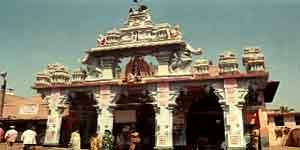
The temple of Krishna
Malpe Beach and Sainte Marie Island
The beach will allow you to spend a pleasant moment by the ocean. From here you can catch a boat to the island of Ste Mary where Vasco da Gama landed on his first trip to India in the 15th century.
See also:





